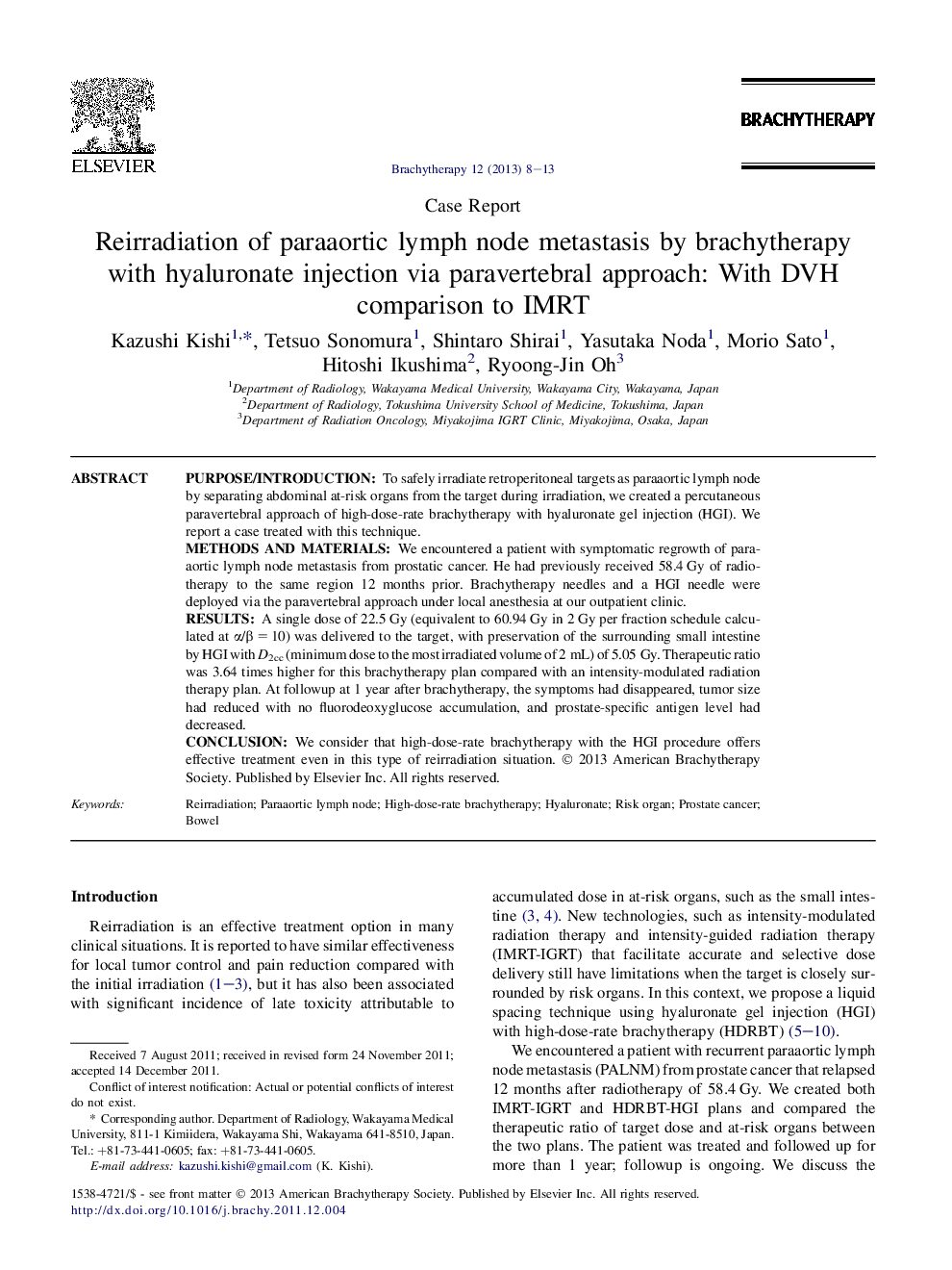| Article ID | Journal | Published Year | Pages | File Type |
|---|---|---|---|---|
| 6189837 | Brachytherapy | 2013 | 6 Pages |
Purpose/IntroductionTo safely irradiate retroperitoneal targets as paraaortic lymph node by separating abdominal at-risk organs from the target during irradiation, we created a percutaneous paravertebral approach of high-dose-rate brachytherapy with hyaluronate gel injection (HGI). We report a case treated with this technique.Methods and MaterialsWe encountered a patient with symptomatic regrowth of paraaortic lymph node metastasis from prostatic cancer. He had previously received 58.4 Gy of radiotherapy to the same region 12 months prior. Brachytherapy needles and a HGI needle were deployed via the paravertebral approach under local anesthesia at our outpatient clinic.ResultsA single dose of 22.5 Gy (equivalent to 60.94 Gy in 2 Gy per fraction schedule calculated at α/β = 10) was delivered to the target, with preservation of the surrounding small intestine by HGI with D2cc (minimum dose to the most irradiated volume of 2 mL) of 5.05 Gy. Therapeutic ratio was 3.64 times higher for this brachytherapy plan compared with an intensity-modulated radiation therapy plan. At followup at 1 year after brachytherapy, the symptoms had disappeared, tumor size had reduced with no fluorodeoxyglucose accumulation, and prostate-specific antigen level had decreased.ConclusionWe consider that high-dose-rate brachytherapy with the HGI procedure offers effective treatment even in this type of reirradiation situation.
